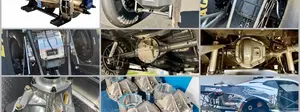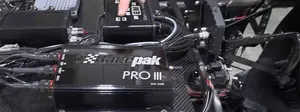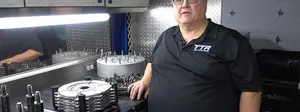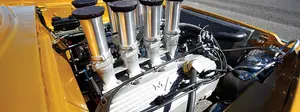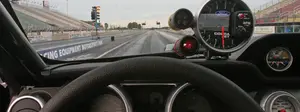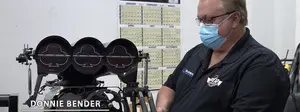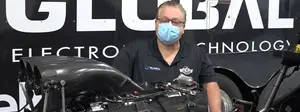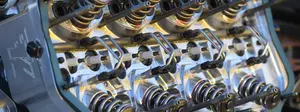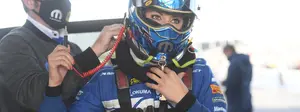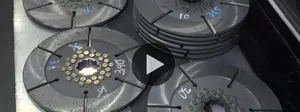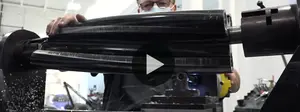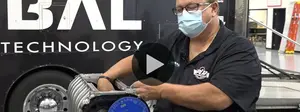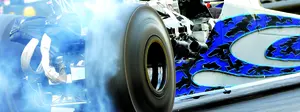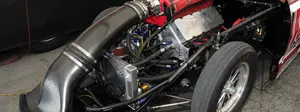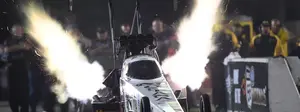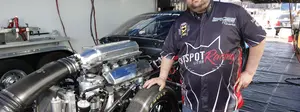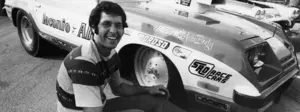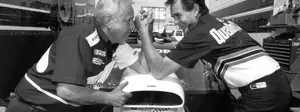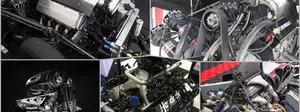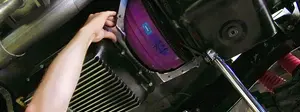

How superchargers can take your race car to the next level
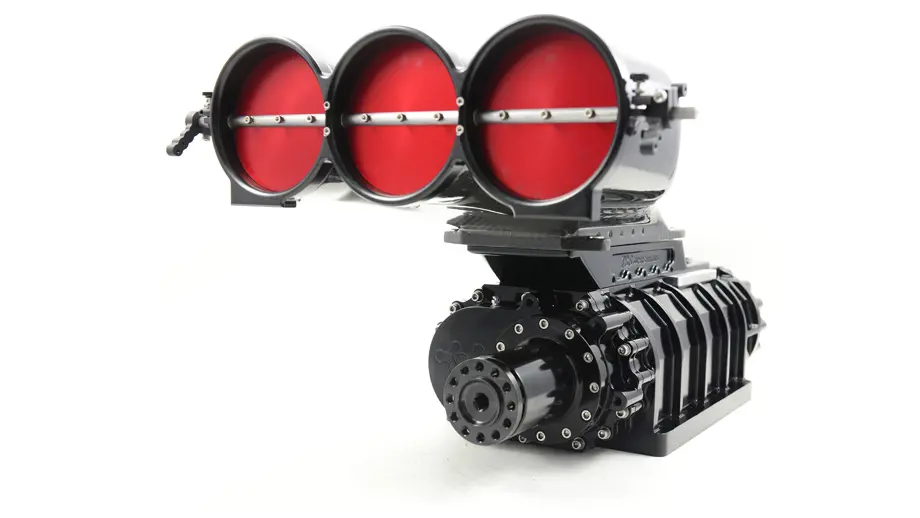
Supercharging has long been a favorite of drag racers who recognize that Mother Nature alone cannot supply ample airflow to the cylinders. You’ll find superchargers in a variety of classes within NHRA, and of course, today, they are regularly used by OE automobile manufacturers and in the aftermarket for street and track performance.
Supercharging increases output by introducing pressurized air to the intake of an internal combustion engine. Through the use of a supercharger (or blower), horsepower and torque can be doubled or tripled.
Unlike a turbo that’s driven by hot exhaust gasses, blowers are driven directly by the crankshaft, so the speed of the supercharger directly relates to engine rpm. With that, there’s mechanical loss due to the parasitic drag of the supercharger, but the gains are well worth it. Of course, it’s important to select the best blower for your application. This includes blower design, size, and pulley selection, and step-up ratio should also be considered in centrifugally driven units.
Speaking of design, you’ll find the two popular choices in drag racing are PD (positive displacement) and centrifugal. PD blowers normally sit atop the engine and have a drive at the front, a case to contain the parts, and a set of rotors that move the air. In contrast, centrifugal blowers use a drive, a scroll-shaped housing, and an impeller that’s similar to what’s found in a turbo. The two types work differently, and there are advantages and disadvantages to each type. However, they both feed boost to the engine and can make copious amounts of power.
Astute NHRA National Dragster readers will note we covered the basics of forced induction in the previous Racing Technology column on turbochargers. So, with that, we’ll delve directly into the art of supercharging and cover the ins and outs of belt-driven boost.
“In simple terms, an engine is an air pump, so the more air you can cram in it, the more power is possible,” said Dave Turner, of ProCharger. “By pressurizing or forcing air into an engine with a supercharger, a three-times [or more] power multiplication is possible.”
Glen Hutchison, of The Blower Shop, explained that, “Any internal combustion engine relies on a ratio of fuel and air being ignited to make power. With a naturally aspirated engine, air enters the engine at atmospheric pressure (14.7 psi) and a corresponding amount of fuel is ingested. In this scenario, you cannot add more air to the engine because it is relying on atmospheric pressure, so you can’t add more fuel to try and increase the power output.
“In its simplest form, a supercharger is an air pump, so being able to add air to the engine above standard atmospheric pressure means you can add a corresponding amount of fuel. As long as you are able to ignite [and efficiently burn] that fuel/air charge, you can dramatically increase the output of any given engine. The amount of air a supercharger will put into an engine is determined by its driven speed relative to that of the crankshaft. This is easily controlled by altering the blower drive pulleys to either speed it up or slow it down.”
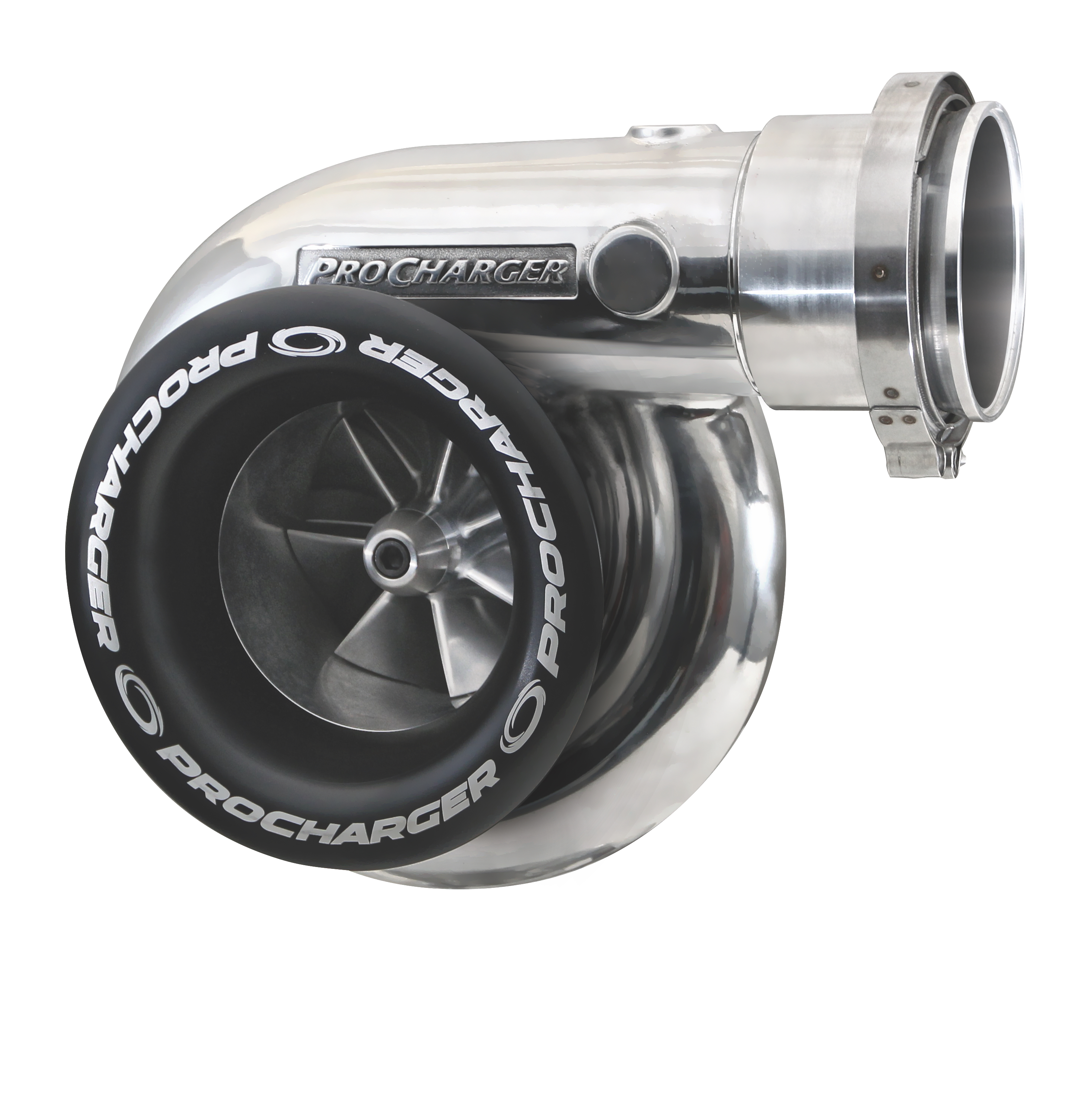
Lance Keck, engineering manager at Vortech Superchargers, added, “We feel that centrifugal supercharging is effective in drag racing and building horsepower due to its linear boost and power curve. Coupled with its significantly higher efficiency, it is clearly a superior option over all others. To put a finer point on it, the word ‘efficiency’ gets thrown around a lot by all kinds of people and, more often than not, is actually used incorrectly or in a blatantly misleading manner. The actual definition of efficiency is ‘the ratio of the work done or energy developed by a machine, engine, etc., to the energy supplied to it, usually expressed as a percentage.’ A modern centrifugal supercharger offers the most horsepower per pound of boost and the least parasitic loss of any type of supercharger. Therefore, by definition, a centrifugal supercharger such as a Vortech is the most efficient supercharging option available.”
While superchargers have been popular in drag racing for more than 60 years, like any other component, there’s always evolution. Today’s blowers feature robust construction, and there are endless options for the street and track. This includes stand-alone head units and complete kits.
“There have been many improvements in design and construction of superchargers over the last decade,” said Hutchinson. “Cast cases have been replaced with billet ones, giving them significantly more strength and structural integrity. Rotors used to be made of cast material with 60 degrees of twist per inch of rotor length, what is known as a standard helical rotor, and these are now available in billet aluminum with 120 degrees of twist per inch of rotor length, known as a ‘high helix’ rotor.
“Again, the billet material improves both the strength and lifespan of the rotor, and the high-helix design has significantly improved the range with which the blower will make boost. Also, the discharge or outlet of the supercharger has been redesigned from its original configuration. What used to be standard was a long rectangular opening, and this has been changed to a pie-shaped opening, also known as a delta opening. Through testing and research, it was discovered that the delta opening offered much better performance by matching the helical twist of the rotor, eliminating turbulence or what aerodynamicists call ‘dirty air.’ In race applications, our TBS blowers feature recessed bearing plates, which move the rotors back and significantly increase the strength of the blower. Retro pockets allow for more advantageous movement of the air as it circulates inside the blower.”
“Superchargers have evolved with CNC manufacturing and 3-D modeling,” said Darren Mayer, president of DMPE. “Today, we can 3-D machine the inlet and discharge ports. This makes for consistent and accurate repeatability and performance. When I started, inlets were as cast, then I started hand porting them and found large hp [horsepower] gains. Today’s inlets have many hours of development and dyno testing to get the most rotor fill [displacement] so the supercharger is as efficient as possible.”
ProCharger is another company with great technology. It designed a self-contained oiling system for centrifugal superchargers and uses computer-aided design and high-quality CNC manufacturing. “This has really moved superchargers into the 21st century with improved efficiency, tighter tolerances, and aerodynamic performance improvements,” said Dave Turner, of ProCharger. “With the growing popularity of fuel injection and tuning software for racing applications, racers can really get that extra 3 to 5% out of their supercharger and race engine, which was not possible 10 or 15 years ago.”
Racers and street enthusiasts have options as to which power adder is best for their applications, and most often, the common choices are nitrous, turbocharging, and/or supercharging, and one advantage of supercharging is instant boost without fussing over bottles. “The boost created from the supercharger is instant and can be controlled with overdrive adjustments,” added Lee Littlefield, of Littlefield Superchargers.
Turner added, “A ProCharger centrifugal supercharger is more predictable, reliable, easier to install, tune, and maintain. A nitrous system is complex and can be unpredictable. Turbochargers require fabrication, external oil lines, and bumping the car during staging to ‘stay on boost.’ With a ProCharger supercharger, the racer simply stages the car, applies the transbrake, and revs up the engine to desired rpm before launching. The racer can concentrate on turning a good light versus dealing with the violence of bumping forward a turbocharged car during staging.”
Intercooling the Beast
A byproduct of compressing air is heat, so racers often employ an intercooler that drops the temperature of the inlet air before it enters the engine. All factory supercharger setups these days use an integrated intercooler with a heat exchanger, but many drag racers forgo the heat exchanger for a tank that holds ice water. This enables racers to run chilled water through the intercooler, which greatly reduces the inlet air temperature. Dropping the inlet temperature allows the ignition timing to be advanced without the fear of detonation.
Keck added, “The necessity of charge cooling [also known as intercooling] depends on several factors, including [but not limited to] boost pressure, static compression, octane rating of fuel used, etc. With many production vehicle engines coming straight from the manufacturer with higher compression, charge cooling on street supercharging applications has become more of a requirement than in previous years. However, in racing, there have been advancements in fuel usage that allow for high horsepower with no charge cooling using alternative fuels such as methanol.”
“It’s not always necessary to intercool,” said Darren Mayer, of DMPE, Inc. “The type of fuel matters. Gasoline has a low latent diffusion of heat as compared to methanol, therefore, intercooling pays a larger benefit when LDH is not available. However, whenever the boosted inlet charge can be cooled, power is always increased.”
Tuning Game
Depending on who you speak to, tuning for maximum power can be easy or hard. Finding the sweet spot can get you to the winner’s circle — mistuning can lead to engine-killing detonation. With that, tuning involves not only dialing in the air/fuel ratio but getting the boost curve right for the engine and conditions. Top Fuel and Funny Car teams regularly alter head-gasket thickness and blower-drive ratio to control compression and boost level, where racers in SAMTech.edu NHRA Factory Stock Showdown are limited to one configuration so they must tune using ignition timing and fuel mapping.
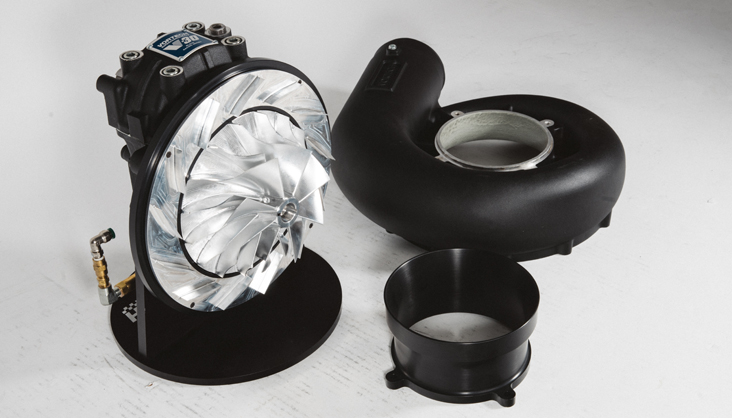
“A race car has many variables, and supercharging is just one of those variables,” said Turner. “To properly tune a race car, someone needs to fully understand the total race car and not just be able to manipulate spark or fuel curve. Ideally, a tuner would have a traditional background in racing and understand race vehicle dynamics, including engine fundamentals, chassis setup, clutch and transmission setup, along with modern-day computer skills. With so much to gain or lose in overall track performance, next to the driver, a great tuner on a race team is probably the most important role.”
Mayer added, “Mechanically, matching the supercharger inlet port to the operating rpm of the engine is the most important part. Only recently have we been gaining on getting maximum gains at low rpm, while also high rpm. Normally, we would have a slow-overdrive inlet and a high-overdrive inlet. Depending on how you run the motor depended on the supercharger configuration.”
“There are many challenges when tuning for maximum performance, but in reality, the blower is not one of them,” said Hutchinson. “In essence, once your blower has been tailored to your engine and its application, it can almost be eliminated from the equation. The blower can be sped up or slowed down as a tuning tool to compensate for changes in altitude, temperature, humidity, and other variables, and deciding how much or by what increment this should be done can be challenging. The hard part is air/fuel ratios, adjusting the timing and clutch. It can be difficult to get everything to come together at the same time. The higher the horsepower, the narrower your tuning window.”
From Keck’s perspective, “The challenges and/or limitations in tuning are different depending on what the vehicle will be used for. The main limitation for street usage is the octane level of the fuel. With many people going to E85, the power capability is certainly higher versus regular pump gas, but with E85, there can sometimes be differences in actual octane rating from batch to batch and from pump to pump. This can lead to decisions between tuning for safety versus tuning for maximum performance. The limitations for tuning race applications include atmospheric conditions, fuel type, and the power support limitations of the materials being used, such as engine blocks, cylinder heads, etc.”

Before closing the conversation, we wanted to list any common mistakes. “On gasoline applications, too much compression can lead to detonation,” said Littlefield. “On alcohol and nitromethane, running the fuel system too lean is problematic after adding a blower that burns fuel more efficiently. And teams may be able to run the Teflon strips for 25 to 50 runs, depending on the application before being rebuilt with one. A blower created with more clearance for a gas or street application can last for five to eight years between rebuilds.”
Mayer added, “On a basic level, the most common mistake is picking the right compression for the amount of boost received from the supercharger. Cylinder pressure is raised with supercharging. Controlling detonation is key in the life of a boosted engine. EFI has changed the game here because precise engine control has allowed for horsepower gains that many could only dream about as little as 20 years ago.”
On the centrifugal side, Turner stated, “A common racer mistake is always thinking spinning the supercharger faster equals more power. Our superchargers are designed to operate at peak efficiency at a specified rpm range, and we advise racers to adjust supercharger pulley sizes based on engine rpm redline to keep their supercharger rpm in the ‘sweet spot.’ We have seen racers consistently improve mph and e.t. by slowing the supercharger down to its desired rpm and revving up their engines.”
Finally, Keck added, “Common mistakes in supercharging most commonly fall in component selection and compatibility with an existing setup. Selecting too small of a supercharger will limit overall performance, as well as the possibility of needing to put a supercharger outside of its efficient or even safe range of operation to reach performance goals (i.e. over spinning the compressor). Selecting too large of a supercharger could adversely affect the boost/performance curve of the overall package as well. You can also add inadequate blow-off valve/valves that can cause supercharger surge under deceleration. Other factors include cam selection and static compression ratio. Modern electronics and fuel options have allowed for compression ratios at 12:1 to 15:1, which were much too high in years past.”
SOURCES
The Blower Shop / 208.985.7650 / TheBlowerShop.com
DMPE, Inc. / 269.428.5070 / DMPEINC.com
Littlefield Superchargers / 714.992.9292 / LittlefieldBlowers.com
ProCharger / David Turner, Marketing Director / 913.338.2886 / ProCharger.com
Vortech Superchargers / 805.247.0226 / VortechSuperchargers.com























